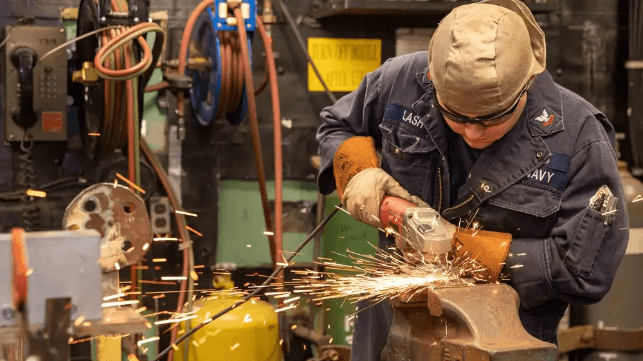U.S. Navy's Manning Shortage is Hurting Underway Maintenance

The U.S. Navy's growing manning gap is adding to its existing fleet maintenance issues, according to the Government Accountability Office. In a fleetwide survey, GAO found that most warship crews are having a hard time performing underway repairs and maintenance because they do not have enough people on board to do the work. As incomplete underway maintenance leads to more serious issues down the road, like increased rates of corrosion or mechanical wear, the challenges in getting the work done at sea are adding to the Navy's difficulty in completing timely repairs during drydock or pierside availabilities. Mission-limiting backlog counts rose measurably in 2023 rose from about 8,500 job items to about 9,000 job items, with most of the increase concentrated in the surface fleet.
The Navy is shorthanded by about 25,000 enlisted personnel, or about 10 percent short of target. GAO has previously reported that Navy crew sizes are too small, even by the Navy's own manning standards, and that crew reductions were increasing operational risk and impacting warships' material condition. Crew size was a factor in the two deadly destroyer collisions in 2017, and while the Navy vowed to make improvements after these devastating casualties, its recruiting shortfalls may make adequate manning more difficult than ever to achieve.
To gauge the service's ability to get work done at sea, GAO's inspectors visited 25 ships, interviewed 140 officers and petty officers, and surveyed the executive officers on 232 battle force ships across the fleet (including subs). 63 percent of the XOs consulted said that it was "moderately to extremely difficult" to complete repairs under way with the number of sailors that they had on board. Even sailors who are on board may not be available to help out with maintenance because their other duties and assignments prevent it - leaving more work for the others, particularly for senior personnel.
"More capable sailors that perform a lot of maintenance get burned out and tired of taking up the slack for other sailors and leave the Navy to do the same work for better pay and working conditions," one respondent told GAO in a survey.
Sailor training and skill level are also matters of serious concern. Two-thirds of XOs said that it is moderately or extremely difficult to get work done with sailors who underwent current classroom training, and another 75 percent said that sailors have a difficult time completing repairs. The numbers were significantly better for sailors who had completed practical on-the-job training led by experienced personnel.
